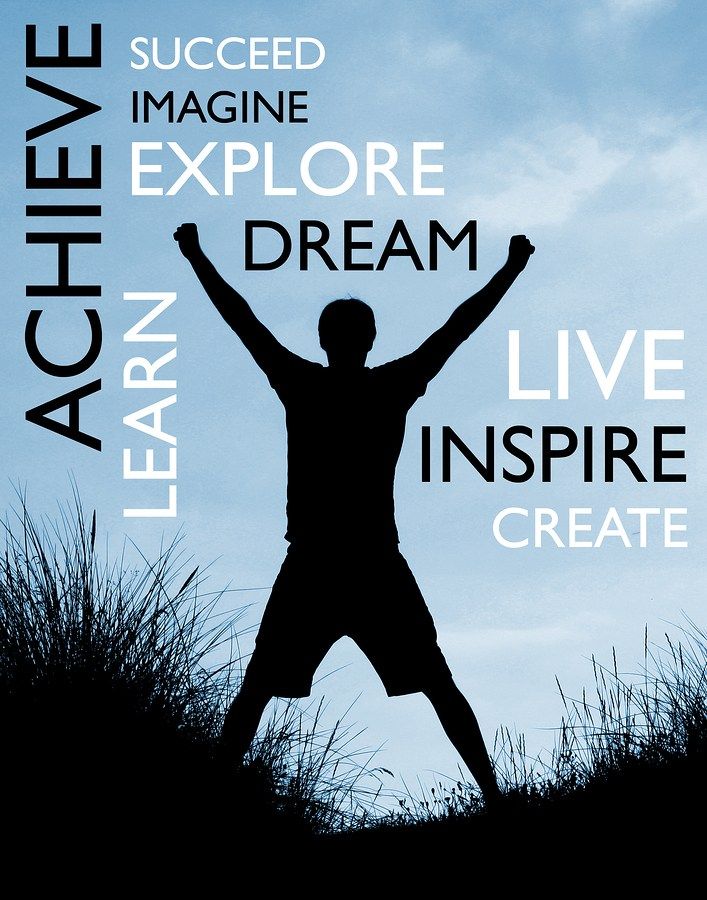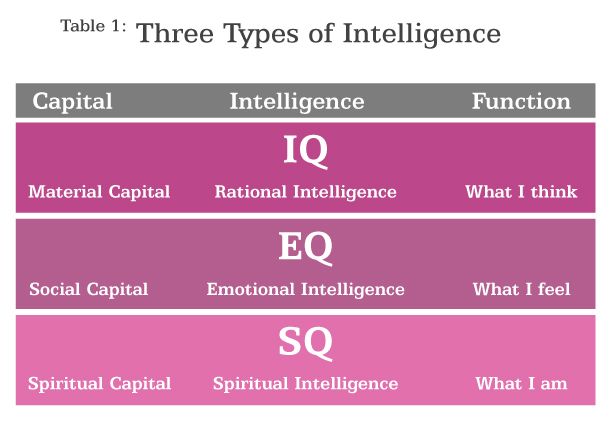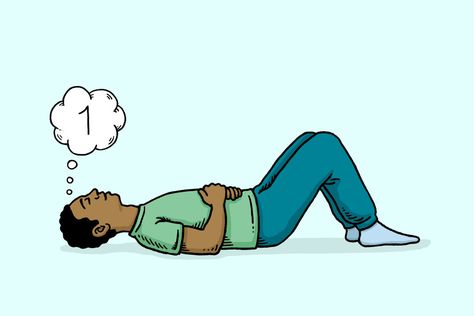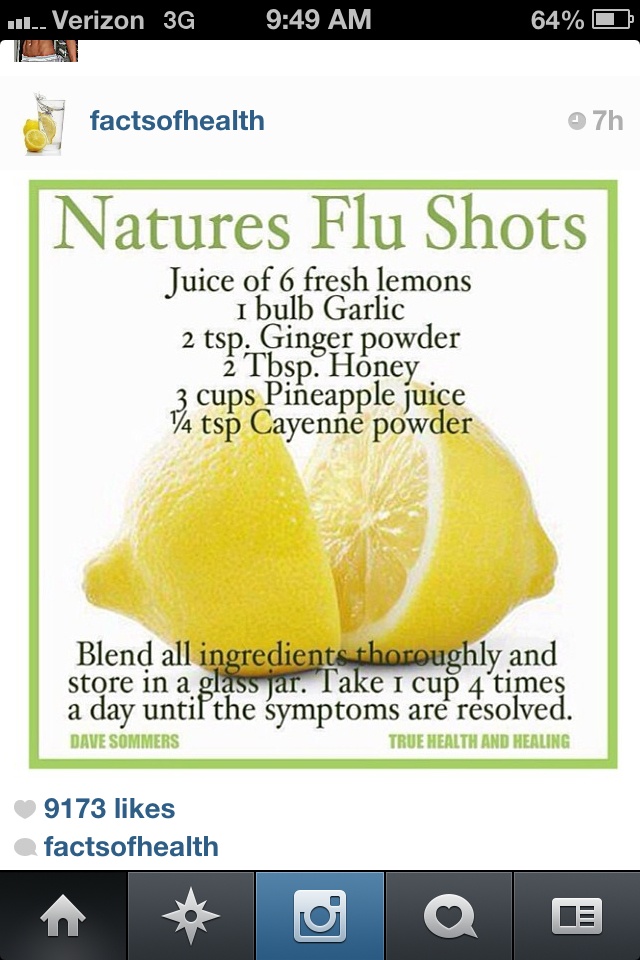Achieve well being
Plan | Achieve Well-being@Work | Independence Blue Cross
Step 1: Ask for management support
To set the stage for a successful employee well-being program, you’ll need support from management. This will help you secure the resources and backing necessary to create real change. Here are some tips to help you get your management team on board:
- Inform managers about your program early on and encourage them to participate.
- Align your well-being value proposition with your company’s mission statement.
- Regularly communicate the goals of the program and the anticipated benefits to both the company and to employees.
- Encourage managers to provide well-being updates during meetings to help build momentum.
Resources
- Benefits of a Workplace Well-being program
- Sample announcement letter
Step 2: Create a well-being committee
A well-being committee can help plan, promote, and implement your program. The committee establishes continuity, builds momentum, and has broad ownership of the program. When choosing your committee members, think about who will be helpful to the program and who the program will affect. Committee members should be enthusiastic, eager to talk about healthy behaviors, and not afraid to encourage participation. Consider interviewing employees and offering an incentive to selected members.
Resource
- Well-being Champion Application
Step 3: Collect data
Research and planning are critical to a program’s success. Here are some important tasks to focus on:
- Ask employees for input on their health interests and needs.
- Assess your company’s environment and culture.
- Review outcomes from previous wellness initiatives.
- Set goals and determine the steps required to reach them.
- Seek support from outside sources to minimize implementation time.
- Develop a budget for prizes and incentives.
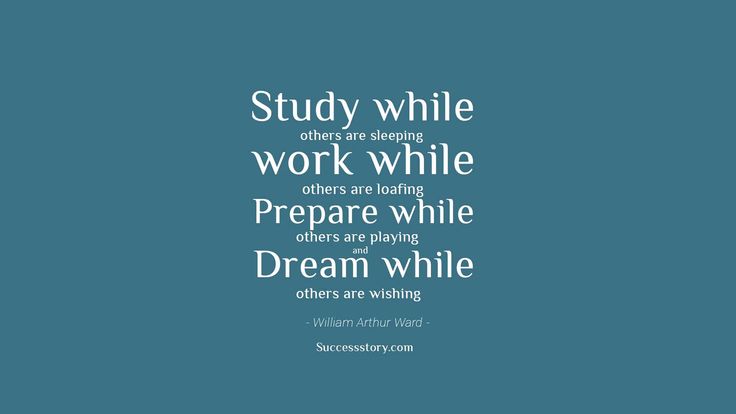
Resources
- Well-being Employee Survey
- Workplace Assessment Survey
- Sample Employee Interest Survey
Step 4: Create an operating plan
Do policies need to change to create a more health-centric working environment whether that setting is in the office or at home? The types of programs you offer will help maintain employee interest, cover a wide range of topics, and involve a wide range of people.
A comprehensive, successful well-being program can take up to three months to plan. You can use our templates as a jumping-off point to design your own plan based on your company’s size, needs, and interests. You can also visit our Learn page to find toolkits and resources to help with your annual planning efforts.
Resources
- Carefully crafting your organization’s wellness plan
- Sample Well-being operating plan
Step 5: Implement and promote your program
Make a formal announcement when you kick off the program.![]() Allow plenty of time to promote scheduled events and activities. Flyers, banners, posters, email announcements, and newsletters are all good ways to spread the word.
Allow plenty of time to promote scheduled events and activities. Flyers, banners, posters, email announcements, and newsletters are all good ways to spread the word.
Resources
- Planning a Health Fair brochure
- Achieve Well-being@Work with Independence poster template
Step 6: Develop a supportive work environment
Begin working on policies that focus on data from Step 3. They could include a tobacco-free workplace policy, healthy meeting policy, the addition of walking paths, stretch breaks, relaxation rooms, or whatever you identified as top needs. All of this will help create a supportive work environment both in the office or at home.
Step 7: Evaluate
After each event or program, evaluate the outcome so you’ll know exactly what you achieved. You might find that some programs were so successful they’re worth re-running throughout the year. Some may prove to be too complicated or won’t have the results you expected. This information will help you refine your plan, so you can be sure to use your time and money effectively.
Resources
- Determine what you will evaluate
- Communicating your evaluation results
- The Fundamentals of Evaluation
9 TESTED TIPS TO IMPROVE YOUR WELLBEING AND QUALITY OF LIFE
By John Adams
If you are a person who remains busy in work and other matters and pays no attention to your health and wellbeing, you must take a break from the robotic routine and pick healthy habits.
According to a psychologist, eating well and exercise gives your body and brain instant benefits of managing stress, depression, and anxiety. True wellbeing comes with balance, constant growth and acceptance.
Here are a few effective and tested ways that can help you improve your wellbeing:
1. Take Proper Sleep:
It may seem to be the most common advice, but trust me most of the people don’t follow the basic strep towards their overall wellbeing. Our body needs proper sleep and rest to heal and renew the energy to function properly. This healing is essential for physical and mental activity throughout the day.
This healing is essential for physical and mental activity throughout the day.
Sufficient sleep regulates the hormones that are directly related to our mood and emotions. Most often when you feel an irritated or emotional imbalance, chances are high that your body lacks in taking enough sleep. An adult body needs nearly 6 to 7 hours of sleep per day. So make sure you take enough sleep.
2. Eat a Balanced Diet:
Sleep alone is not going to give you the required benefits. You need to eat a healthy and balanced diet and ensure your body receives enough amount of nutrition. The food you consume determines how healthy your inner system is. Moreover, it also helps in determining your emotional health and mental illnesses such as depression.
When your body lacks essential nutrients, it leads to serious health problems. Moreover, you end up facing emotional distress and anxiety. Health and wellness experts suggest that you should eat fruits and vegetables in sufficient amount. Moreover, eating nuts and lentil also strengthens your heart. Try to avoid caffeine, sugar and processed food as much as possible.
Moreover, eating nuts and lentil also strengthens your heart. Try to avoid caffeine, sugar and processed food as much as possible.
3. Expose Your Body to Sunlight:
Vitamin D deficiency leads to several problems such and Seasonal Affective Disorder or SAD. When you are exposed to sunlight, it causes the release of endorphins also called ‘happiness hormones’ that is responsible for the productivity of the brain.
So, take some time out of your routine and spend some time in sunlight. But makes sure you wear sunblock to prevent sunburn.
4. Deal with Stress:
Although it is difficult to avoid stress nowadays, however, it is definitely possible to deal with it. It is very important to learn to deal with stress in a smart and effective way. For that, try to avoid the situations that cause stress. If your stress is unmanageable, note down the causes of stress as well as what actions can you take to improve your reaction, mood, and even situation?
5.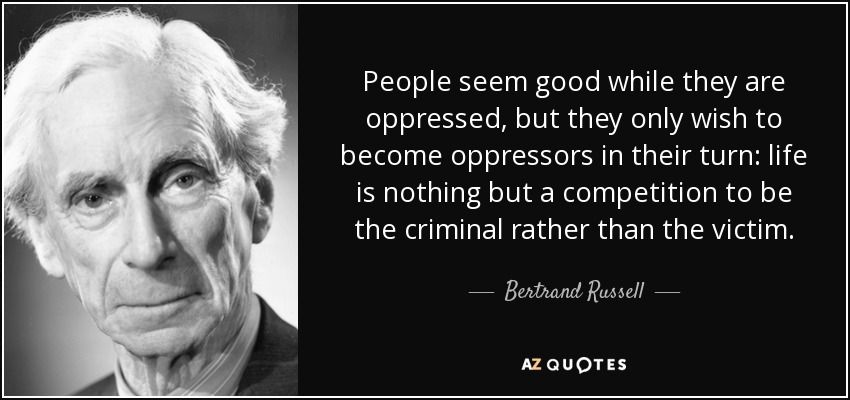 Exercise Daily:
Exercise Daily:
When you remain physically active and exercise daily, your blood flow improves in your entire body. With the increased blood flow, the number of oxygen increases and you feel more energetic, fresh and mentally active.
Exercises and physical activities are more important if you are an office worker. Exercise not only ensures our body remains fit but also keeps your mind healthy as well. You don’t have to join expensive gyms for that. A simple walk with your pet or daily morning walk is more than sufficient. The important thing is to make it a daily habit.
In addition to your mental health, exercise strengthens your bones and muscles that prevent you from a different type of personal injuries during a workout or running your daily errands.
6. Stay Away from Smoking and Alcohol:
If you keep drinking and smoking, no matter how much you spend on your health and how hard you try, your efforts are going to be wasted.
Quit smoking and drinking to ensure you lead a healthy life.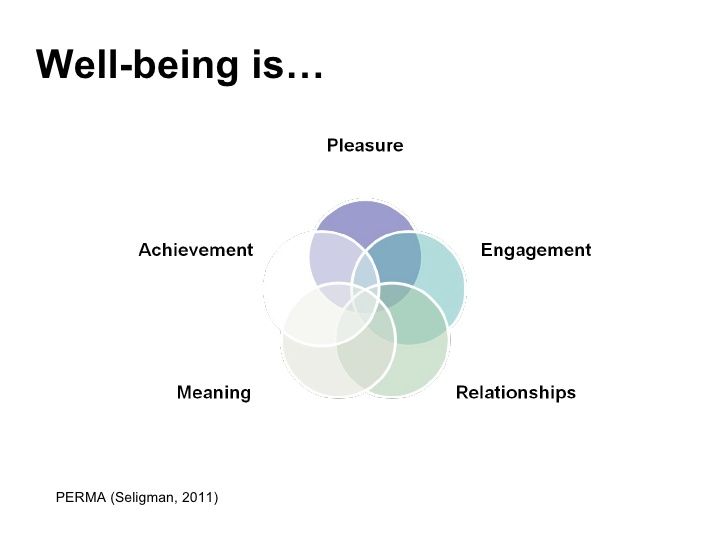
7. Be Social, as Much as You Can:
Isolation and lack of communication are the two biggest reasons for depression, mental and physical illnesses. No matter how busy your family and work life is, try to dedicate some time to friends and socialise with them.
A man cannot stay healthy without interacting with other people. Communicating with others lowers the stress level. If you have heard of laughter therapy, it also has the same purpose to reduce the stress in which you laugh with other people. Everyone needs acceptance and friendship that is fulfilled only when you socialise with others.
8. Find and Practice New Hobbies:
Hobby helps us keep busy and engaged. When you have an interest in some activities and enjoy doing them, you take healthy steps to improve your emotional wellbeing. It also keeps the work and daily life’s pressure off your brain. Finding new hobbies is great for strengthening your brain and boost your mood.
9. Learn to Live in the Present:
The biggest reason for experiencing mood swings, depression and anxiety are when a person remains stuck in past events. Negative self-talking such as ‘why people did this to me’ steal not only the happiness but make the person miss opportunities that the present moment tires to offer.
Negative self-talking such as ‘why people did this to me’ steal not only the happiness but make the person miss opportunities that the present moment tires to offer.
Learn to live in the present moment and try not to think too much about the future.
It’s Simple: Laugh and Enjoy!
Don’t take life too seriously. Those who remain happy, smile more and try to keep themselves happy experience better quality of life than those who remain worried all the time. According to a study, children laugh 200 times a day while adults laugh 15 times a day.
Staying happy and laughing more is essential for a quality life.
90,0001 Site of the Healthcare Department of Volgogonsk - Healthy LifeInternet portal on a healthy lifestyle: http://www.takzdorovo.ru/
"Gothaled Line" Hot Line "Hot Line" Hot Line "Hot Line" "on healthy nutrition: 8-800-200-0-200 (free call from any region of the Russian Federation)
Article on the dangers of smoking
a certain level of health.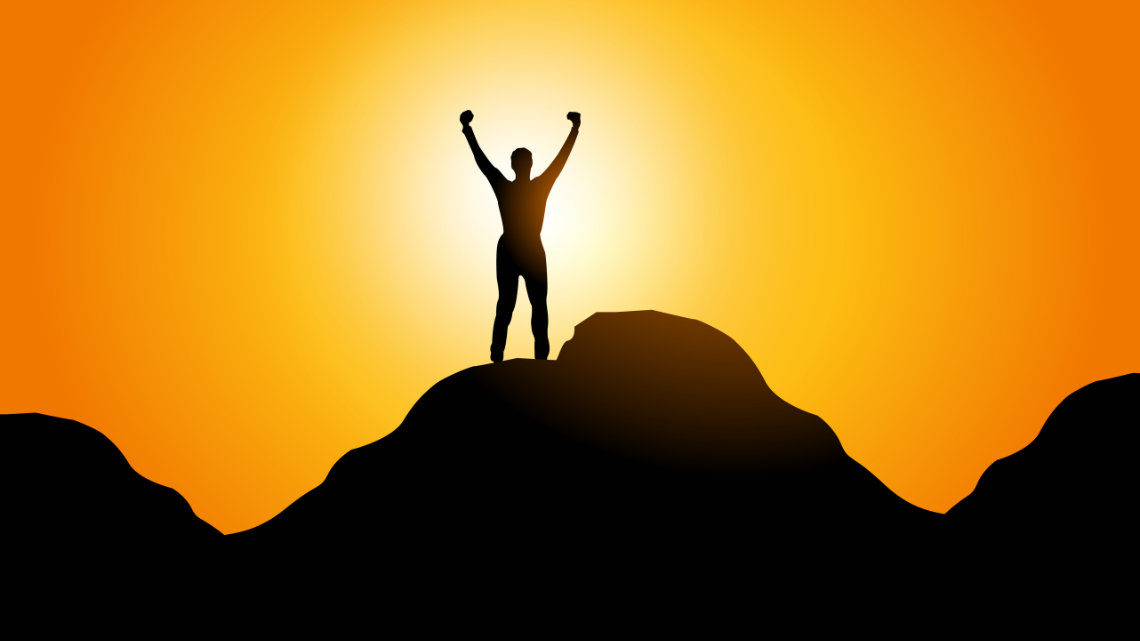
What is health? There are a number of definitions, which, as a rule, contain five criteria that determine human health:
*complete physical, spiritual, mental and social well-being;
* normal functioning of the body in the system "man - environment";
* the ability to adapt to constantly changing conditions of existence in the environment;
*no disease;
*ability to fully perform basic social functions.
We will focus on the definition of health, which is given in the Constitution of the World Health Organization (WHO).
It states that health is “a state of physical, mental and social well-being and not merely the absence of disease or infirmity”.
In a generalized form, health can be defined as a person's ability to adapt to the environment and their own capabilities, to resist external and internal negative factors, illnesses and injuries, to preserve themselves, expand their capabilities, increase the duration of a full life, i.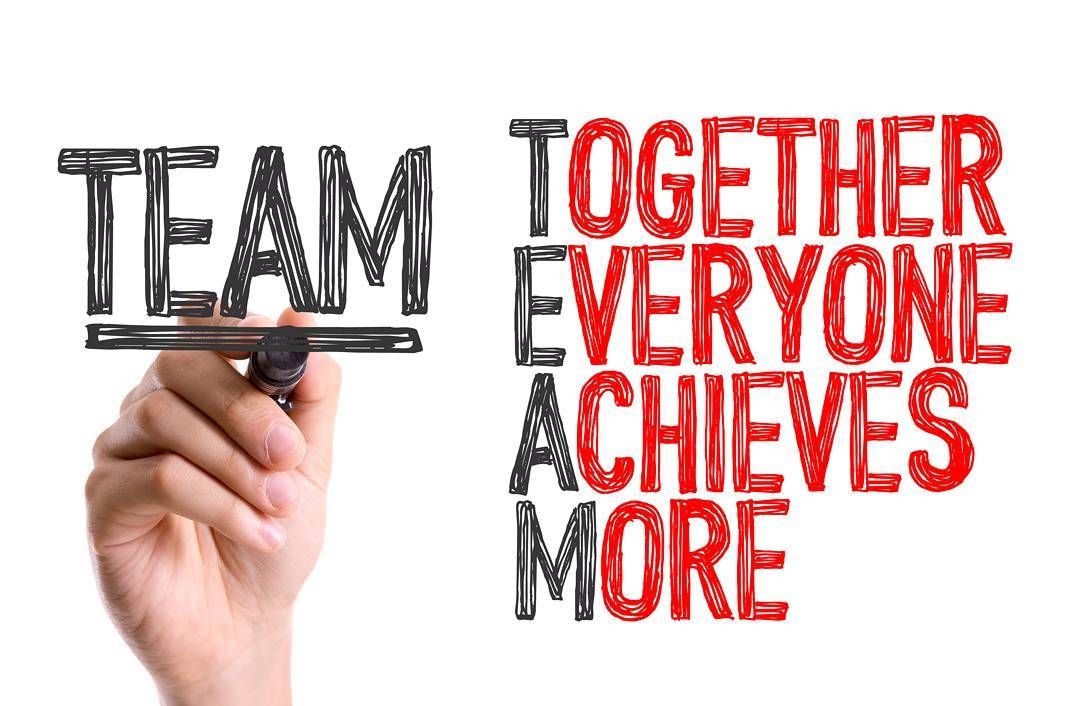 e. ensure your well-being.
e. ensure your well-being.
The meaning of the word well-being in the Dictionary of the Russian language S.I. Ozhegov defines it as “a calm and happy state”, and happiness is defined as “a feeling and state of complete and supreme satisfaction”.
Proceeding from these concepts, we will conclude: human health is inseparable from his life activity and is valuable because it is an indispensable condition for the effective activity of the individual, through which well-being and happiness are achieved.
It is possible to achieve well-being only through work aimed at expanding one's spiritual, physical and social capabilities.
Consider the statement on this subject from the treatise “On Duties” by the ancient Roman politician, orator and writer Marcus Thulius Cicero (106-43 BC): customs, laws and regulations; after all, we want to be rich not only for ourselves, but also for the sake of children, relatives and friends, and especially for the sake of the state; for the means and wealth of individuals constitute the wealth of the civil community.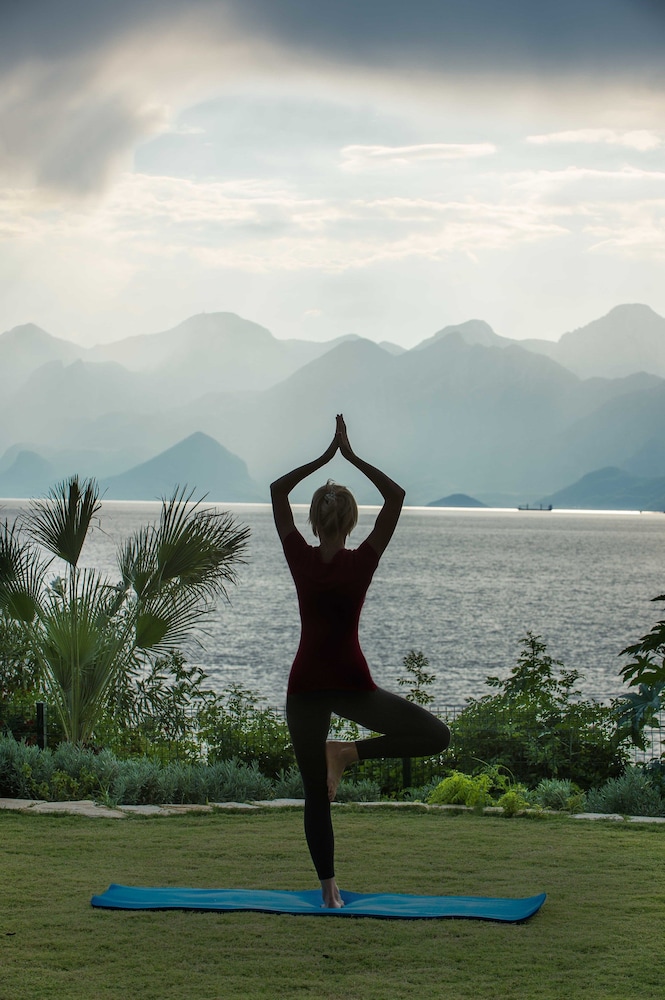
Thus, health is an indispensable condition for effective human life.
Factors affecting health
Individual health mainly depends on four factors:
*biological factors (heredity) - about 20%;
*environment (natural, technogenic, social) - 20%;
*health service - 10%;
*individual lifestyle - 50%.
From this distribution it follows that the state of a person is 90% individual, since it depends on heredity, environmental factors and mainly on the individual lifestyle (the behavior of each, his habits, actions, aspirations, addictions).
In the book of N.M. Amosova * “Thoughts about health” says:
“Most diseases are not to blame for nature, not society, but only the person himself.
Most often he gets sick from laziness and greed, but sometimes from unreason.
To be healthy, you need your own efforts, constant and significant.
Nothing can replace them.
Man is so perfect that it is possible to restore health from almost any point of his decline.
Only the necessary efforts increase with old age and the deepening of diseases "
*Nikolai Mikhailovich Amosov (06.12.1913 - 13.12.2002) - Soviet surgeon-cardiologist, Russian writer, author of innovative methods in cardiology
Let us conclude: we ourselves are most often to blame for all health troubles.
This is the first thing.
Secondly, we have no one to rely on, we need our own efforts, primarily in the knowledge of risk, the development of a program of behavior, and most importantly, in its constant implementation.
A healthy lifestyle is that individual system of behavior and habits of each individual that provides him with the necessary standard of living and healthy longevity.
A healthy lifestyle to a large extent contributes to the reasonable satisfaction of the physical and spiritual needs of a person, the formation of a socially active person who understands personal responsibility for his health as a criterion for socio-economic development.
It must be emphasized that the formation of motivation for a healthy lifestyle among young people is of particular importance today.
This idea is confirmed by official data on the state of spiritual and physical health of young people at the present time.
The main components of a healthy lifestyle.
In our opinion, the first step to creating your own healthy lifestyle system is to develop a solid motivation.
You can't come to a healthy lifestyle at someone's direction.
This should be a personal, deep conviction and confidence that there is simply no other way to health, to realize one's life plans, to ensure well-being for oneself, one's family and society.
Another component of a healthy lifestyle is the mode of life.
All human activity occurs in the mode of time distribution, partly forced, associated with socially necessary activities, partly according to an individual plan.
So, for example, the mode of life of a schoolchild is determined by the curriculum of classes at school, the mode of a serviceman is determined by the daily routine approved by the commander of the military unit, the mode of a working person is determined by the beginning and end of the working day at the enterprise.
Thus, the regime is the established routine of a person's life, which includes work, food, rest and sleep.
The main component of the mode of life of a person is his work, which represents the expedient activity of a person aimed at creating material and spiritual values.
A person's mode of life must be subordinated, first of all, to his effective labor activity.
A working person lives in a certain rhythm: he must get up at a certain time, perform his duties, eat, rest and sleep.
And this is not surprising, all processes in nature are to some extent subject to a strict rhythm: seasons alternate, night follows day and vice versa.
Rhythmic activity is one of the basic laws of life and one of the foundations of any work.
A rational combination of the elements of the mode of life provides a more productive work of a person and a high level of his health.
The whole organism as a whole participates in the labor activity of a person.
The labor rhythm sets the physiological rhythm: at certain hours the body experiences a load, as a result of which the metabolism increases, blood circulation and respiration increase, and then a feeling of fatigue appears; in other hours, days, when the load decreases, rest comes after fatigue, strength and energy are restored.
Proper alternation of work and rest is the basis of high human performance.
Now it is necessary to dwell on the issue of rest, while emphasizing that rest is a state of rest or active activity, leading to restoration of strength and working capacity.
The most effective way to restore working capacity is active rest, which allows you to rationally use your free time.
The alternation of types of work, the harmonious combination of mental and physical labor, physical culture provide an effective restoration of strength and energy.
A person needs to rest every day, once a week and once a year, using his free time to strengthen his physical and spiritual health.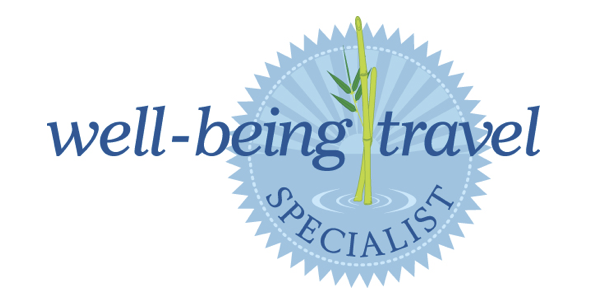
Talking about the need to alternate work and rest, it should be emphasized that sleep is one of the most important types of daily rest.
Without sufficient, normal sleep, human health is unthinkable.
The need for sleep depends on age, lifestyle, type of human nervous system.
Sleep primarily contributes to the normal functioning of the central nervous system.
Lack of sleep, especially systematic, leads to overwork, exhaustion of the nervous system, disease of the body.
Sleep cannot be replaced by anything, it is not compensated by anything.
Sleep is the basis of a healthy lifestyle.
To be healthy and productive, you need to develop the habit of going to bed and getting up at the same time, learn how to fall asleep quickly and sleep soundly.
Proper nutrition is the most important condition for human health, its performance and longevity.
What does it mean to eat right?
This means to get with food in sufficient quantity and in the correct ratio the substances necessary for the body: proteins, fats, carbohydrates, mineral salts, vitamins and water.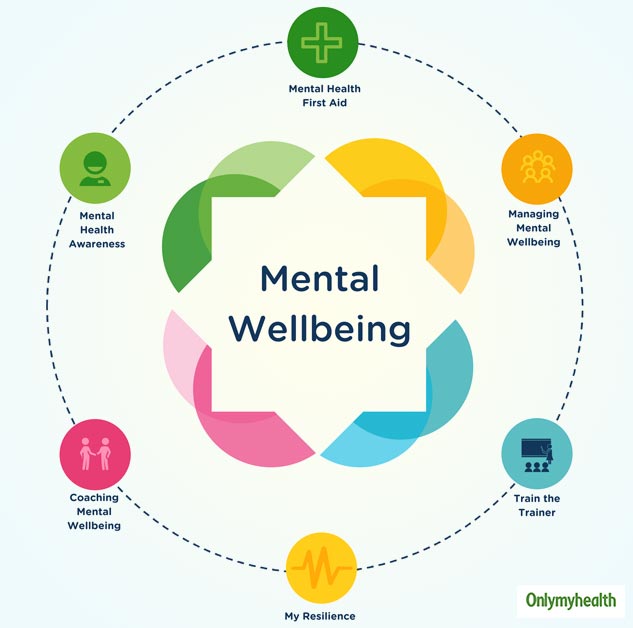
There are several theories of proper nutrition, but so far no one can give each of us solid instructions: eat this and that and in such quantity.
Diet depends on the health and lifestyle of each individual.
All elements of the human life regime (work, rest, sleep and nutrition) are largely individual.
A person who adheres to the requirements of a healthy lifestyle will have a high level of efficiency, health and longevity.
CONCLUSIONS
1. No medical institutions will be able to make a high school student healthy if he does not receive healthy lifestyle habits in the family from an early age.
2. High performance depends on physical activity, hardening of the body, the optimal combination of mental and physical labor.
3. Causes of health disorders can be mental and physical overstrain, excessive industrial and domestic noise, insufficient sleep and inadequate rest, poor ecology, excessive and insufficient nutrition, bad habits, untimely provided and poor-quality medical care, etc.
4. A healthy lifestyle presupposes physical activity, an optimal mode of work and rest, proper nutrition, sufficient physical activity, personal hygiene, hardening, the eradication of bad habits, a positive perception of life, etc.
5. Longevity is gained primarily by those people who adhere to the rules of a healthy lifestyle throughout their lives.
how to achieve well-being and be healthy”, Eris Urban – LitRes
All rights reserved. No part of this book may be reproduced in any form without the written permission of the copyright holders.
Published by Llewellyn Publications Woodbury, MN 55125 USA. www.llewellyn.com
© 2021 by Ehris Urban, Velya Jancz-Urban
© Russian translation, Russian edition, layout. JSC Publishing Group Ves, 2021
* * *
Dear Reader!
I am sincerely grateful that you picked up the book of our publishing house.
Our wonderful team selects and prepares manuscripts with great care. They inspire people to take care of their lives, the lives of loved ones and our beloved Motherland. Our spiritual culture originates in the depths of millennia. Its basis is freedom, love and compassion. The harsh climatic conditions and large expanses of Russia give birth to courageous people with a sensitive soul - this is the ideal of a Russian person. We will be glad if our books help you become such a person and strengthen your virtues.
We believe that spiritual striving is a solid foundation for a fulfilling life and can manifest itself in any area of human activity. It can be family and child-rearing, science and culture, art and religious activities, entrepreneurship and public administration. Revive the light of the soul in yourself, support it in others. It is this effort that creates new opportunities, inspires us to care for others, contributes to the growth of both personal and social well-being.
Sincerely yours,
Owner of the Ves Publishing Group
Pyotr Lisovsky
Incredibly pleasant and easy reading, "Take the risk of becoming a green book, full of useful tips, useful book" information confirmed by careful research.
Rosemary Gladstar;0177
About the Authors
Velja Janz-Urban and Eris Urban are the mother and daughter who created the Grounded Goodwife project together to encourage people to take their health into their own hands by offering them workshops on holistic medicine and bold presentations on history from a women's perspective. Eris grew up in a family that valued holistic beliefs and beliefs. She is confident that "if you are wise and feel connected to the earth, you will be able to walk a peaceful path even on the most uneven roads." Eris is an accomplished herbalist, holistic nutritionist, flower essence practitioner, Western Ingham Reflexologist, and a graduate of the New England School of Homeopathy. As a teenager, she became interested in reiki and received a master's certificate at the age of 17. Eris has a Bachelor of Arts degree in Anthropology and Sociology and is a Certified Teacher of English as a Foreign Language. Eris enjoys raising bees, growing organic vegetables and medicinal plants, and working at her pharmacy. Velha lives by the motto "There is no growth without change." She is a cheerful teacher, public speaker, author of books, a former farm owner in Brazil, and an expert on the lives and lives of women in colonial-era New England. After moving into a debt-sold farmhouse built in 1770, Vella became interested in the colonial era and as a result created her entertaining and educational presentation entitled "The Not-So-Good Life of a Housewife in the Colonial Era." Velha has adopted a huge number of dogs and cats in her house, and most of all she enjoys a fresh stack of library books, she loves second-hand stores and is passionate about alternative medicine.
As a teenager, she became interested in reiki and received a master's certificate at the age of 17. Eris has a Bachelor of Arts degree in Anthropology and Sociology and is a Certified Teacher of English as a Foreign Language. Eris enjoys raising bees, growing organic vegetables and medicinal plants, and working at her pharmacy. Velha lives by the motto "There is no growth without change." She is a cheerful teacher, public speaker, author of books, a former farm owner in Brazil, and an expert on the lives and lives of women in colonial-era New England. After moving into a debt-sold farmhouse built in 1770, Vella became interested in the colonial era and as a result created her entertaining and educational presentation entitled "The Not-So-Good Life of a Housewife in the Colonial Era." Velha has adopted a huge number of dogs and cats in her house, and most of all she enjoys a fresh stack of library books, she loves second-hand stores and is passionate about alternative medicine.
* * *
This book is dedicated to:
MD Rebecca Burer
Naturopathy Doctor Kathleen Riley
Naturopathy Doctor Elizabeth Herman
Licensed Acupuncturist
Andrea Coakley
We hope to repay you for what you have given us.

Acknowledgments
It is hard to overestimate how important it is to have people close to you, whose views are close to yours, when you start or continue the path of the green witch. Neisa Erismann Janz (mother of Velya, grandmother of Eris) was one of the first to embark on the path of professing a new and unknown holistic approach to life. She did not have the opportunity to learn from someone else's experience, and at the same time, for some reason, her husband (Velya's father, Eris's grandfather) did not support her undertakings. The latter made me think: does the fact that he did not support her say more about him or about her? After all, it is important when someone is sincerely interested in how you learn and develop. Ultimately, she gave up trying to bake whole grain bread with cranberries and nuts, use molasses, and argue that health food store vitamins are better than grocery store supplements. A meat grinder for making "economical chicken neck pate" and a white ceramic chicken in which we stored vitamins Duo-Kap , went to a thrift store. When she died, there was nothing holistic about her anymore.
When she died, there was nothing holistic about her anymore.
The loneliness that sometimes accompanies the green witch on her life path may be necessary to understand who you really are. But no matter how much other people care about you, if you can't openly talk to them about who you really are, you remain lonely. Working on our project Grounded Goodwife , we feel proud, inspired and supported when we receive thank you notes, letters, book reviews, phone calls and kind words on social networks from people who attend our workshops and presentations, approve our mission to join the path of the green witch.
Long before the herbal regimen helped Jim Urban get rid of Lyme disease (as confirmed by blood tests), he fully embraced our unconventional approach to life. His love and support is endless. And he also happily tried to cook according to all the recipes from this book!
We are convinced that by watching Kathy Vander Eyck's 30-minute How to Negotiate an Agent video, we were able to secure a book publishing contract with Llewellyn Worldwide . We followed her recommendations on how to engage a literary agent and wrote a letter requesting 297 words (she recommends staying within 300 words). We were shocked that we had the opportunity to choose who will represent us!
We followed her recommendations on how to engage a literary agent and wrote a letter requesting 297 words (she recommends staying within 300 words). We were shocked that we had the opportunity to choose who will represent us!
Heather Greene, who worked with us as a New Author Discovery Editor at Llewellyn Worldwide and calls herself a "book midwife", was with us from conception to labor and delivery. Although we grumbled about some of the changes she wanted to make, she had a clear idea of what kind of book we should write.
We are also grateful to Llewellyn Worldwide , the world's oldest and largest independent publisher of body, soul and spirit books, in business since 1901. We are honored to be part of your mission to open the way for people to a holistic lifestyle.
Disclaimer
The authors and publisher are not responsible for the consequences of the correct or incorrect use of medicinal plants, ingredients and practices described in this book. Like all medicines, herbal medicines and holistic practices can be dangerous if used incorrectly. The authors and publisher do not guarantee the therapeutic effect of any of the remedies and recipes described in this book. The practices described in this book are indicative of the lifestyle the authors have chosen and may not be suitable for everyone. If you have a physical or mental health condition, or are taking prescription or over-the-counter medications, you should tell your doctor about the holistic practices and herbal remedies you plan to use.
Like all medicines, herbal medicines and holistic practices can be dangerous if used incorrectly. The authors and publisher do not guarantee the therapeutic effect of any of the remedies and recipes described in this book. The practices described in this book are indicative of the lifestyle the authors have chosen and may not be suitable for everyone. If you have a physical or mental health condition, or are taking prescription or over-the-counter medications, you should tell your doctor about the holistic practices and herbal remedies you plan to use.
Introduction
Stories of a wise housewife
Don't be afraid to be scared (Velha)
One day, when I received a postcard from our landlord's insurance company, I fell into absolute panic. This intimidating message informed me that within the next two weeks, someone would come to our house to "do a standard building inspection" that is, our home in Woodbury, Connecticut, and that this inspection would include measurements and photography.

“God! I wrote to my daughter Eris. “We need to somehow hide the beehives and disguise the chicken coop!”
Feverishly, as if in a fog, typing this message, I already realized that this was actually impossible. Everyone who has tried to set up a backyard farm has heard similar creepy stories:
• Liberty Mutual refused to insure me because I kept 'dangerous non-pet animals'. In my case, it could only be bees.”
• "My neighbor's dog was stung by a bee and I was sued ."
• “My neighbor is allergic to bees and was stung by one of 'my' bees. I'm guessing he's not responsible for not having allergy relief on hand?"
• "I was kicked out because my precinct attracts children and is therefore a danger to them ."
• “The insurance company I used for 26 years refused to cover me because I could potentially sell eggs, which is an additional risk. They convince me that chickens are farm animals and that they carry diseases.
Brr!"
• "My homeowner's insurance was canceled because 'the number of non-pets exceeds the maximum allowed'. I have five chickens. I don't keep tigers or wolves."
Eris and I covered the buzzing hives with branches and pampas grass to "hide" them. We barred our free-range chickens for two weeks so they "won't be so conspicuous". While we never saw a “local representative with an ID badge with a photo” and “completely trained,” the site must have been inspected because we received a letter from our insurance agent recommending a perimeter patio fence be installed. There was no mention of chickens or bees - and I felt like we dodged a bullet.
But then a parcel arrived with knitted jeggings from Belle by Kim Gravel , which I ordered in QVC . Now I think of them as "skinny jeans that came with a warning." A tag was firmly affixed to the front pocket, which read: “This garment may contain metallic fibres/filaments/wool. Do not wear this item of clothing while near an MRI scanner or while undergoing an MRI.
" What happens if I wear these jeans during an MRI procedure that I would never have agreed to? Will they explode and fly off me? Will they melt into my skin? Well, I looked up information. People who are going to have an MRI are advised not to wear make-up or paint their nails because some cosmetics contain metals that interact with the MRI scanner's magnets. They are also advised - just to be on the safe side - to minimize the use of hair products, antiperspirants and sunscreens, because they also contain metals. In addition to all this, there is a risk of getting first-degree burns if the ink used to apply the tattoo is warmed up - even if it is a tattoo of the eyelids. And don't forget to remove your navel piercing or toe rings! When I imagined a person inside a 110 decibel MRI scanner rumbling, imagined an unknown force tearing off his eyelashes and nails, and fried his eyelids with a tattoo to a crisp, I don’t know what shocked me more: the fact that people agree to undergo such examination, or the fact that all of these products contain metal! How often do people get MRI appointments when companies like QVC accompany clothing with similar warnings to avoid prosecution?
It was this scary tag on the jeggings that made me stop being afraid of our homeowner's insurance company and gave me a lot to think about.
For over 26 years we have been raising free range chickens. Of course, we liked fresh eggs, but the real reason we keep chickens is because they eat ticks and don't get Lyme disease, so eggs don't get it either. Our insurance company wouldn't mind at all if we flooded the entire property with poisonous insect-killing chemicals and put up yellow chemical hazard signs. But Ingrid, Muriel and Sarah are forbidden from pecking ticks, supposedly because we can get Lyme disease and then we will have to take doxycycline (we would not drink it anyway, because there are effective protocols for treating Lyme disease with herbs – but you get the idea).
We have hives in which bees can safely live, pollinating our beds, on which herbs and vegetables grow without genetic modifications. But for insurance companies, bees are banned - but if empty bottles of the toxic herbicide RoundUp were scattered across the lawn, the "local representative" with his notepad and photo ID badge would simply walk around them carefully, not looking up from writing a report .
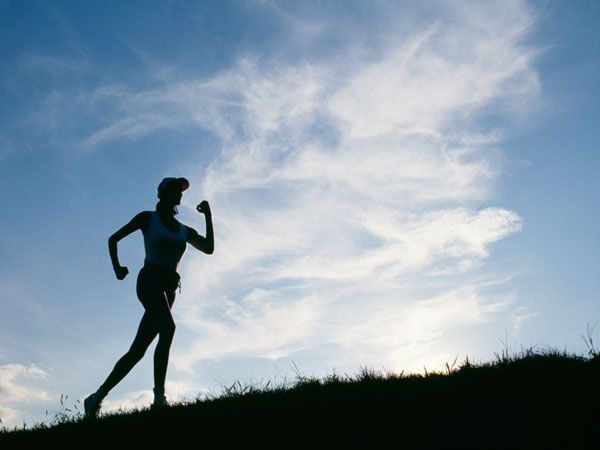
How did it happen? At what point did it all turn out this way?
Anyone who watches TV for more than five minutes is bombarded with a vast assortment of prescription drug advertisements with incredibly frightening side effects.
• “Possible changes include gas with oily secretions, increased bowel movements, an urgent need to empty the bowels, and an inability to control this need.”
• "There is a possibility of liver tumors, the rupture of which can cause fatal internal bleeding."
• "Coma or death ... and trouble swallowing."
• "Deadly skin infections in the perineal area can result."
… Yet green witches (like us) are often seen as some sort of radicals for drinking raw milk, burning cleansing incense, eating fermented food, and refusing to get mammograms.
We are both an herbalist and feminist historian, daughter and mother, giving hands-on holistic workshops and historical presentations at conferences, libraries, museums, community centers, colleges and nursing homes. We support women in their quest to find their wisdom and follow the path of the green witch.
We support women in their quest to find their wisdom and follow the path of the green witch.
We are green witches, which means that we appreciate and consult the earth, trees, plants and stones for their healing properties, and we are also committed to an environmentally friendly lifestyle. We concentrate on the material world and on the Earth where we live. For us, this is a deeper concept than just a “clean life” (this definition is more associated with eco-food stores and cafes, such as Whole Foods and Panera ). We have nothing against witchcraft, but one of the ideas we want to cover here is this: to become a green witch, you don't have to cast spells and talk to fairies.
Stories of a wise mistress
The higher you go, the fewer people in your tribe (Eris)
The people around me never really understood me. I grew up in a family where everyone was into holistic medicine. My family and I have been on a blood type-adjusted diet since I was nine years old and have never eaten corn syrup, wheat, or pasteurized milk.
We don't have a microwave and we don't drink from plastic bottles. I remember when I was little my mother used to give me arnica granules if I was not feeling well. The other kids thought I was weird because I ate Ezekiel bread sandwiches in the cafeteria. When acquaintances came to visit me and saw how kombucha, kimchi and kefir were fermented in the kitchen, they would say something like: “Ugh! What an abomination! Looks like a science fair project that went wrong!”
At the age of 16, I asked for a Vitamix dehydrator and blender for my birthday - and I received this gift. When my parents and I refused to vaccinate me with the Gardasil vaccine, the teacher who taught our health classes said: "Your mother is behaving very irresponsibly." In middle school, I started to get interested in Reiki and received my Reiki Master Certificate at the age of 17.
After ninth grade, when I left Shipog Valley High School to study online, my parents were told that I would become an “asocial child” and “never go to college” (in fact, I graduated from college a semester early ).
After I was diagnosed (through a blood test) with the first documented case of West Nile in Litchfield County, Connecticut, an infectious disease specialist casually remarked, “You will never get rid of this virus in your system.” Our naturopath suggested using castor oil compresses to draw the infection out of my liver, which is where the virus nests. A castor oil compress is a woolen or fabric strip that is soaked in castor oil and applied to the skin. It is applied to the area to be treated and covered with a piece of polyethylene (we use a plastic bag) to heat it up and press against the skin. A heating pad is placed on top for about 45 minutes. The area is then wiped clean with a warm, dry towel. This process is repeated in courses of four days with breaks of three days. After the first cycle, we were surprised to notice an irritated area of red skin the size of a postcard and right above the liver. Six months later, blood tests showed that there was no virus in my body.
I received a Bachelor of Arts in Anthropology and Sociology and graduated from the New England School of Homeopathy.
I am an herbalist, holistic nutritionist and practitioner of flower essence therapy, Ingham reflexology and teaching English as a foreign language. I used to often do private consultations for clients, but now I prefer to speak in public because I can reach out to a wider audience that way.
In my free time, I enjoy cleaning my pharmacy, gardening where I grow organic herbs and vegetables, and doing yoga and Krav Maga. Until recently, one of my favorite relaxing activities has been tending our hives, because, as crazy as it sounds, bees are easy to get attached to (but after the eighth time a bear attacked our site, beekeeping had to be abandoned).
In fact, I have never had long-term friendships with anyone, so I (until recently) did not think that anyone could find me sincere and attractive, and was sure that I was completely unable to communicate with other people . It had been that way since I was at elementary school in Burnham, where the teachers described me as shy.
My family understood me - but no one else.
As for romantic relationships, I spent a lot of time fidgeting on the couch and complaining to my mother: “Is there at least one person in the world who does not turn out to be a strange weirdo, who does not have a child and who does not tell me all night about How well does he play drums or win fantasy football without asking anything about me?
Sometimes, in moments of failure, I think I'll end up as one of the misunderstood spinsters involved in philanthropy at the turn of the 20th century (there were many in Connecticut, such as Caroline Ferriday and Edith Morton Chase). They lived in unique estates, were educated, ran their own businesses, challenged gender roles, and followed their calling. They were delightful—too delightful for contemporaries to understand.
Recently, I came across a simple phrase, the author of which is unknown, and I finally understood what the meaning of my life is: "The higher you climb, the fewer people in your tribe.
" For too long I tried to fit into a world that wasn't mine. I went on camping trips where everyone except me, as required, wore a “favorite flannel shirt”, met with investment bankers and orthodontists on speed dates, and spent five whole minutes on Tinder (until I realized that I couldn’t stand it if I see in the photo another man with a naked torso, standing in front of a mirror, holding a can of Bud Light beer in his hand). In the end, I realized that this world would never become my home. I will never meet people close to me there, and that's okay. I can be myself when I'm around others - it's just that I've never really been with the right people. I am a green witch whose tribe consists of two people (the second member of this tribe is my mother). Instead of feeling sorry for the charitable spinsters at the turn of the 20th century and fearing that I would become one of them, I now understand them and their refusal to conform to common rules. I would be honored to be in their circle (and they all had cool wallpapers!).

I am sure that if you are wise and close to the ground, you will be able to drive peacefully even on the most uneven roads.
Stories of a Wise Housewife
No growth without change (Vella)
WOR-AM . There was only one brand of yogurt in the dairy section of a grocery store in Ridgefield, Connecticut. One brand, three flavors: Danone vanilla, Danone coffee and Danone pineapple. Nobody knew that I ate yogurt, took vitamins Duo-Kap or ate "thrifty chicken neck pate" (yes, you read that right) because Mom said the latter was "a wonderful source of calcium." There was always a plastic bag of chicken necks in our refrigerator, which my mother diligently stocked. Every few months she loaded frozen necks into our cast aluminum pressure cooker. Then, putting on goggles (as if the dish contained explosives or projectiles), she watched the steam hissing out of her. When the necks turned into a kind of puree, she put our old-fashioned manual meat grinder on a wooden stool with a footrest.
While my brother stood on the bottom step to keep the stool from dancing all over the linoleum floor, I turned the wooden handle of the meat grinder (like winding up an old Ford Model T) while my mother loaded necks into its inlet. If you stretch your imagination, you can imagine the resulting product similar to canned tuna. Then mom added celery and onions, sauce Miracle Whip and hot dog seasonings. She served "thrifty chicken neck pasta" on whole-wheat bread. If we complained that we had small pieces of bones stuck in our teeth, she simply brushed it off and reminded us of the quick wits of World War II prisoners, who, as she read somewhere, used eggshells as a source of calcium.
I grew up in a happy ignorance of the world of medicine. Every time we went to our family doctor for a routine checkup, she would take us upstairs for tea and serve it in a clear Chinese porcelain service that once belonged to her mother. We called her Becky. It seemed to me that everyone invites their doctors to weddings and that there is nothing strange about your doctor going on vacation with your family.
When I turned 31, I had to change my mind.
My husband, Jim, and I waited seven years before trying to have a baby, and then we had difficulty conceiving. When I finally got pregnant, the obstetrician decided that my uterus was too big for this period and suggested that I might have twins. But it was not twins - it was a dead child. I don't remember at all how we got from the dark ultrasound room with the glowing monitor to the office many floors below, where I had to take a blood test. This all happened a few days before Christmas and we had to wait five days before we could perform the fetal scraping procedure. I cried quietly as they wheeled me into the operating room and continued to cry when I woke up in the recovery room. Despite the anesthesia, I remember thinking about how unusual it was. And that you don't have to be conscious to feel like your heart is broken.
That's when I learned that not all doctors are like Becky. After the procedure, the gynecologist never came out to talk to Jim, who, worried and anxious, was waiting in the lobby of the hospital.
No one thought of telling him that I was already in the recovery room and everything was fine.
A week later, I made an appointment with naturopathic doctor Kathleen Riley. And since then, with the exception of surgery on my thumb for a torn ligament (when my 14-year-old son Mick plopped down on my arm as he took his seat in a restaurant), I have never returned to the world of allopathic medicine. Both times, giving birth to children, I invited midwives. We haven't been to a primary care physician, haven't taken prescription drugs, and been going to the same naturopath for over 30 years. We always had insurance, but we never used it because it didn't cover things like acupuncture, yoga, visiting a naturopath or buying supplements. Our family is just like any average American family. We have headaches, sore throats or colds. We simply do not turn to allopathic medicine to treat these diseases. Of course, this is our choice regarding our lifestyle, and it is not suitable for everyone.
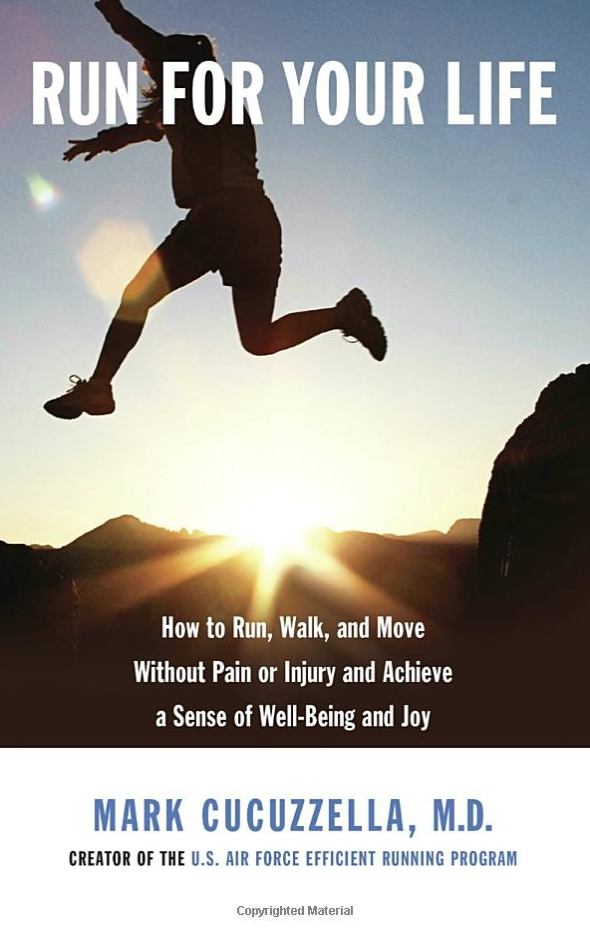
To be honest, I never discussed this with anyone outside of my family until 2010, when my life was turned upside down. Many people have always known that we are gluten-free and doing “weird” things, like eating Peter D’Adamo’s blood type diet, but they didn’t know anything else. In 2010, we moved to the countryside in Brazil and were betrayed and deceived by a close family friend. We lost everything, and when we got back to Connecticut, we had to start all over again.
I groped in the dark for a while, until I learned to truly appreciate myself.
An article I recently saw in a newspaper made me fully realize who I really am. In this article, I was described as a teacher, author of books, public speaker, and "a funny and sociable person who created and presented to us a historical entertainment program called The Not-So-Good Life of a Housewife in the Colonial Era." Funny? Sociable? Yes, the audience will be waiting for me to jump out of the clown van! And then I remembered my first teaching experience at Ridgefield High School.
Department heads and school principals have always commented on my energy and enthusiasm because I was able to spice up teaching in potentially boring subjects like English or social studies.
My odd mannerisms of mind and belief that learning should never be boring proved ideal for my next job as an elementary school teacher for gifted children. Why look at pre-prepared preparations under a microscope when it is much more fun to examine your own earwax (and also the director's earwax, if he agrees)? One day, my second graders won first place in the National Statistical Poster Competition. They did a work on the topic "Is your navel convex or concave?". The kids made a pretty funny chart and I'm sure they remember the meaning of those two words forever.
After being deceived and betrayed in Brazil, I decided to take the advice of my teacher friends who thought I should "do a traveling show." I created the program “ How do you like it?! Practical Science and began teaching classes throughout the Northwest on topics like Anatomy of an Owl Pellet or Homemade Pizza Box Solar Stove.
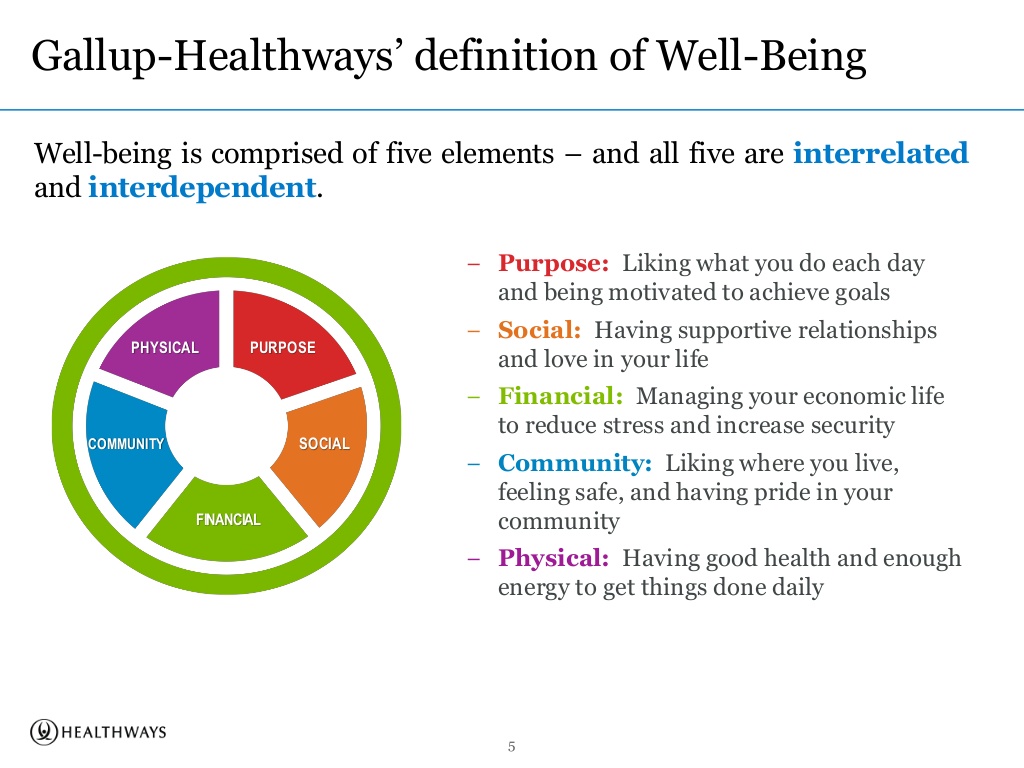
When I moved into a 1770 farmhouse that had been repossessed from the previous owner for debt, it sparked my interest in taboo topics in colonial women's lives. For example, what did women do when they had their period, if underwear had not yet been invented? The result was a presentation on "The Not-So-Good Life of a Housewife in the Colonial Era" and then other uncensored talks on history from a women's perspective, and finally I began to work full-time with my daughter Eris on project Grounded Goodwife - "Wise mistress".
When you talk about alternative medicine, people are either very, very interested in this topic, or they roll their eyes, mistaking you for some superstitious type who is draped in amulets. For most of my life, I didn't talk about it, even though it was an important part of me. But having lost everything, I decided to stop worrying about what others think, about anything.
I've been following the holistic path since my days of eating "chicken neck pâté" and I know it works.
